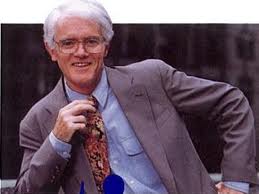
My trading journal is jammed with many of his pithy observations. Here are a few of my favorite Lynch truisms, each followed by my own insights.
- "It’s human nature to keep doing something as long as it’s pleasurable and you can succeed at it, which is why the world population continues to double every 40 years.” My takeaway: if you aren’t getting pleasure from investing, you’re doing something wrong. If you stop enjoying it, it’s probably time to step away.
- “In this business, if you are good, you’re right 6 out of 10 times. You’re never going to be right 9 out of 10.” Think of investing as baseball. Novice investors have the most trouble here. Often coming from successful professional careers, they’re used to batting 80% or better – suddenly hitting less than 50% is emotionally difficult.
- “You can find good reasons to scuttle your equities in every morning paper and on every broadcast of the nightly news.” This relates back to what Peter Lynch said about needing to be resilient and patient. I’ve always maintained that Wall Street is the world’s most sophisticated disinformation machine. The so-called experts on the Street are always trying to get you to do the opposite of what is best for your investing returns. You must believe in what your charts tell you, not the talking heads.
- “Gentlemen who prefer bonds don’t know what they’re missing.” Peter Lynch was an advocate of staying fully invested in a portfolio of stocks and equity funds, and he derided those who kept their assets in bonds or money market accounts. He famously said, “I’m always fully invested. It’s a great feeling to be caught with your pants up.” What’s the point here? If you hope to have more money tomorrow than you have today, you have to be willing to put a fair chunk of your assets into stocks.
- “There seems to be an unwritten rule on Wall Street. If you don’t understand it, then put your lifesavings into it.” This is clearly a tongue-in-cheek comment. Both Peter Lynch and Warren Buffett preached to their respective shareholders about the importance of understanding a company’s business and products. How many investors truly understood the inner workings of Enron and AIG? Clearly, they paid dearly for their oversight.
- “As I look back now, it’s obvious that studying history and philosophy was much better preparation for the stock market than studying statistics. Investing in stocks is an art, not a science, and people who’ve been trained to rigidly quantify everything are at a big disadvantage.” My own belief is that reading stock charts is indeed an acquired art. Being able to accurately listen to what the charts are telling you requires a very personal understanding of psychology, history and who you are as an investor. Rigidity is kryptonite to a trader. As Peter Lynch aptly noted, “the natural born investor is a myth.”
Although I read Lynch’s books, followed his career and learned his investing approach, I eventually formulated my own investing methodology and evolved into a very different type of trader than Peter Lynch. I believe deeply that the education of any investor commands an openness of mind and spirit that allows consideration of other perspectives. But this openness must be balanced by the need to emerge true to your own investment principles, tendencies and emotional nature.
Trade well; trade with discipline!
-- Gatis Roze
SUGGESTION: Make it easier to read my weekly blog by signing up for automatic RSS or email updates!






